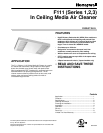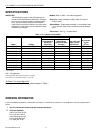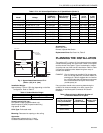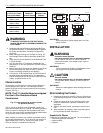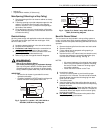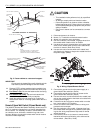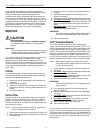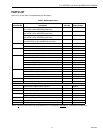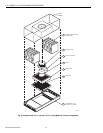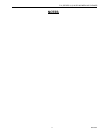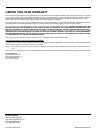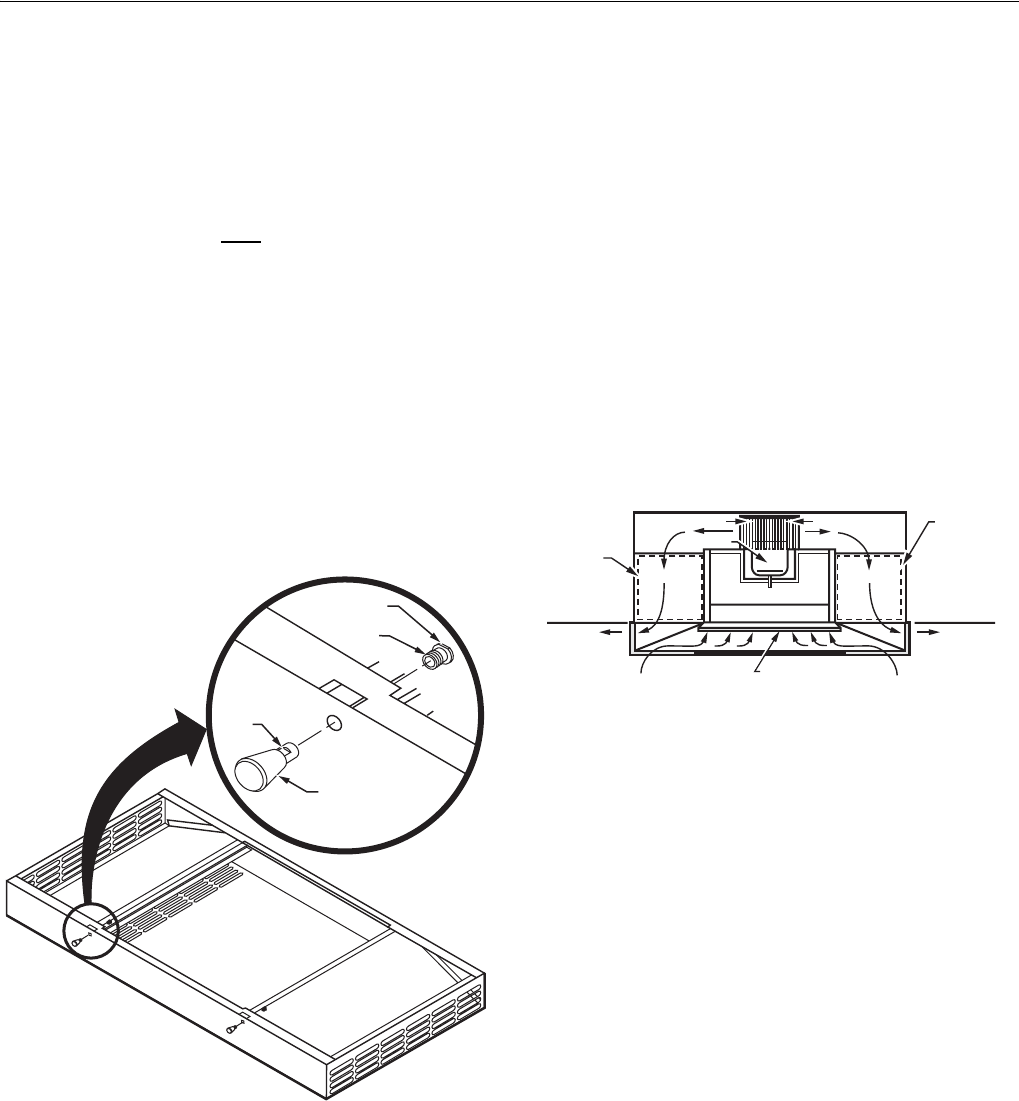
F111 (SERIES 1,2,3) IN CEILING MEDIA AIR CLEANER
7 68-0198-2
14. Connect one wire on air cleaner to power supply wire
with a wire nut following color code used at remote
switch. (White)
15. Connect the ground wire from the remote switch to a
ground stud of the wiring compartment cover.(Green)
16. Fold wires into wiring compartment. Replace wiring
compartment cover.
17. Turn on power to air cleaner at fuse or breaker.
18. Check operation by turning air cleaner at HIGH,
MEDIUM, and LOW. Note
that only the remote switch
will operate the air cleaner.
Lid Assembly
The F111 lid is held in place by two separable hinges and two
spring loaded plungers. To install the spring loaded plungers
on the lid follow these steps:
1. Pull the plunger back and twist a quarter turn to reveal
the wrench flat on the body of the spring loaded plunger
(see Fig 7.)
2. Turn the threaded barrel out of the spring plunger.
3. Insert the threaded barrel through the hole in the lid and
turn the spring loaded plunger onto it.
4. Tighten the assembly with wrenches.
5. Repeat steps 1 through 4 for the second plunger.
Fig. 7. Lid assembly.
Opening/Closing the Lid
To open the lid, pull the spring loaded plungers back to
disengage the plunger. Carefully swing the lid open on the
hinges while supporting the filter and/or adsorbent modules as
required. To close, swing the lid into the closed position and
engage the plungers.
Removing /Replacing the Lid
IMPORTANT
The lid is heavy. Make sure that it is supported
before removing.
To remove the lid, swing it into the open position. Slide safety
catch to off position. Move the lid to the side to disengage the
hinge pins. Reverse the procedure to replace the lid. Make
sure safety catch is in safe position.
OPERATION
The F111 (series 1,2,3) in Ceiling Media Air Cleaner has been
engineered to improve indoor air quality for commercial and
industrial applications. The filters are the most practical and
effective filtering system for removing atmospheric dust,
pollens, bacteria, viruses, mold spores, smoke, fumes, mists
and aerosols. Refer to Fig. 8.
Fig. 8. F111 (series 1,2,3) air cleaner operation.
The air cleaner is either operating (power on) or off (power
off). There are no other operational options available. Even
when the area is unoccupied, the air cleaner can be operated
continuously to prevent buildup of airborne contaminants.
Operate the air cleaner only when the area is occupied when
specific activities produce contaminants.
The CPZ™ sorbent module has the ability to collect and hold
gas-phase compounds and vapors typically found in
commercial and light industrial facilities. These gases and
vapors frequently appear as odors that, at times, can be
annoying and irritating. The modules become saturated after
collecting 25% to 50% of their weight in gaseous odors. The
quantity of CPZ™ material provides adequate dwell time to
ensure up to 95% collection efficiency in the first pass. This
also provides a long maintenance-free service life.
The minimum recommended air exchange rate is 2.5 times
per hour. In a heavily contaminated area, up to 15 air
exchanges per hour can be necessary. The factors that
determine what the rate of air exchange should be are:
• generation rates of the various pollutants;
• concentration level of the pollutants;
• desired contamination reduction level.
Airborne contaminants will always be present in the air where
contaminant generations take place. Air cleaning systems and
ventilators do not eliminate airborne contaminants, they
reduce the excessive accumulation of the contaminants. To
eliminate the contamination, the source of contamination must
be removed.
THREADED
BARREL
SPRING
LOADED
PLUNGER
WRENCH FLAT
WRENCH
FLAT
M11994
M12651A
CEILING LINE
CLEAN AIR
DISCHARGE
CEILING LINE
CLEAN AIR
DISCHARGE
PARTICLE FILTER
PREFILTER
AIR IN
AIR IN
INTAKE
BLOWER
MOTOR
AIR VENTS
CPZ™
SORBENT
FILTER
MODULE
CPZ™
SORBENT
FILTER
MODULE



